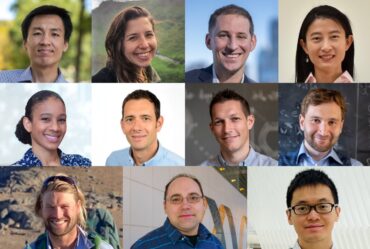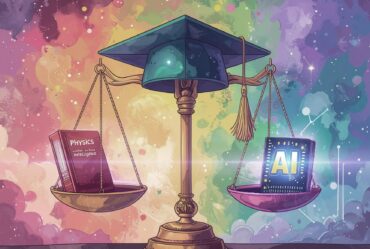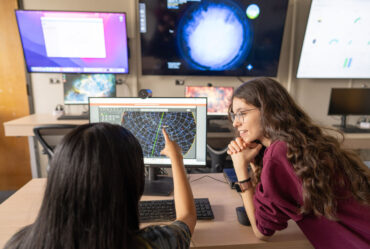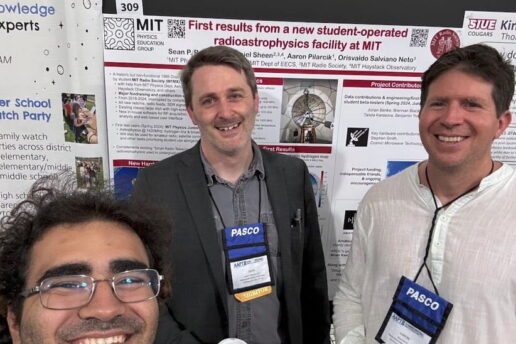
Physics Education Group at AAPT Summer Meeting 2024
This year, the annual Summer Meeting of the American Association of Physics Teachers (AAPT) was held in Boston for the first time in decades, taking place July 6-10 at the Westin Boston Seaport. Over 1000 physics educators from around the world gathered to learn and share the latest advances in their field, make professional connections, and engage with research in the science of learning and teaching physics. As a local university with a strong investment in physics education, MIT sent a substantial number of contributors and attendees to the Meeting, including many members of the Physics Education Group (PEG). We also hosted several special events for the Meeting on the MIT campus. In thanks for these organizational contributions, MIT was recognized as one of the Meeting’s local host institutions, and a plaque was presented to PEG’s Senior Manager Sean Robinson during the Meeting’s first plenary session.
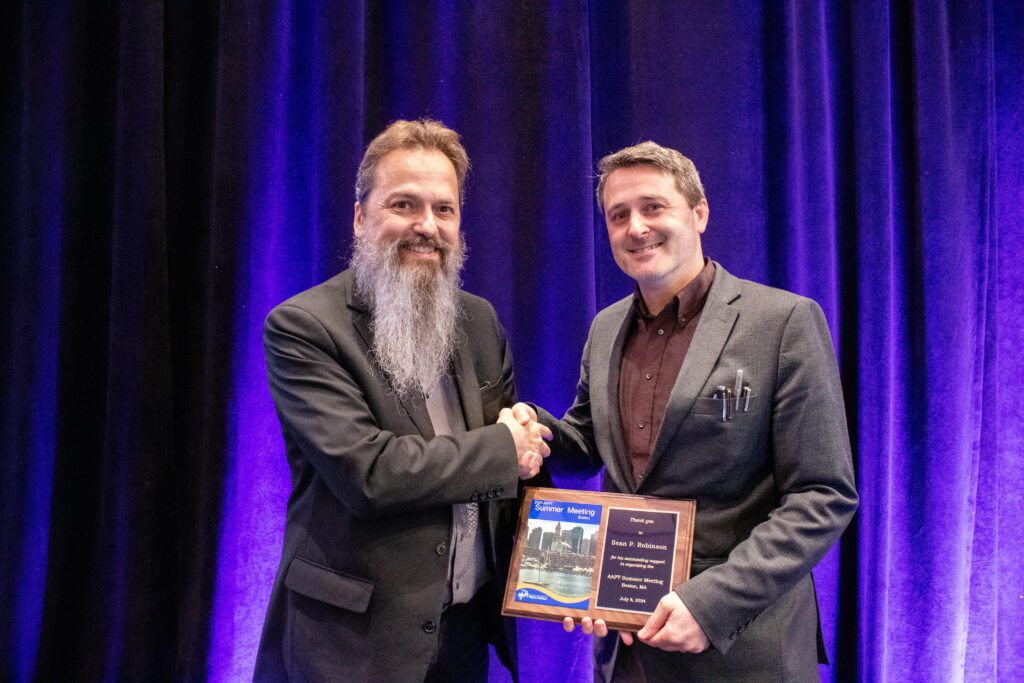
Throughout the meeting, the MIT Department of Physics was well-represented at a table in the Meeting’s Exhibit Hall, with eight scheduled volunteers from PEG and a number of MIT Physics graduate students (including Laurel White, Marianne Moore, Sergio Eraso, and Ali Ghorashi) rotating through. The team handed out lots of free “MIT Physics” branded merchandise, recruited for an open postdoctoral position in physics education research (PER) within our group, and fielded hundreds of questions about the MIT Physics academic program from prospective graduate and undergraduate students and their faculty advisors. We also made contact with a large number of MIT alumni at the Meeting who have spent their careers in the field of physics education after graduating from our program. As a bonus to our time in the Exhibit Hall, we also acquired a new 72 cm superconducting maglev track from our neighbors in the Hall, Quantum Levitation, which is sure to be a popular addition to our lecture demonstration and public outreach efforts for years to come.
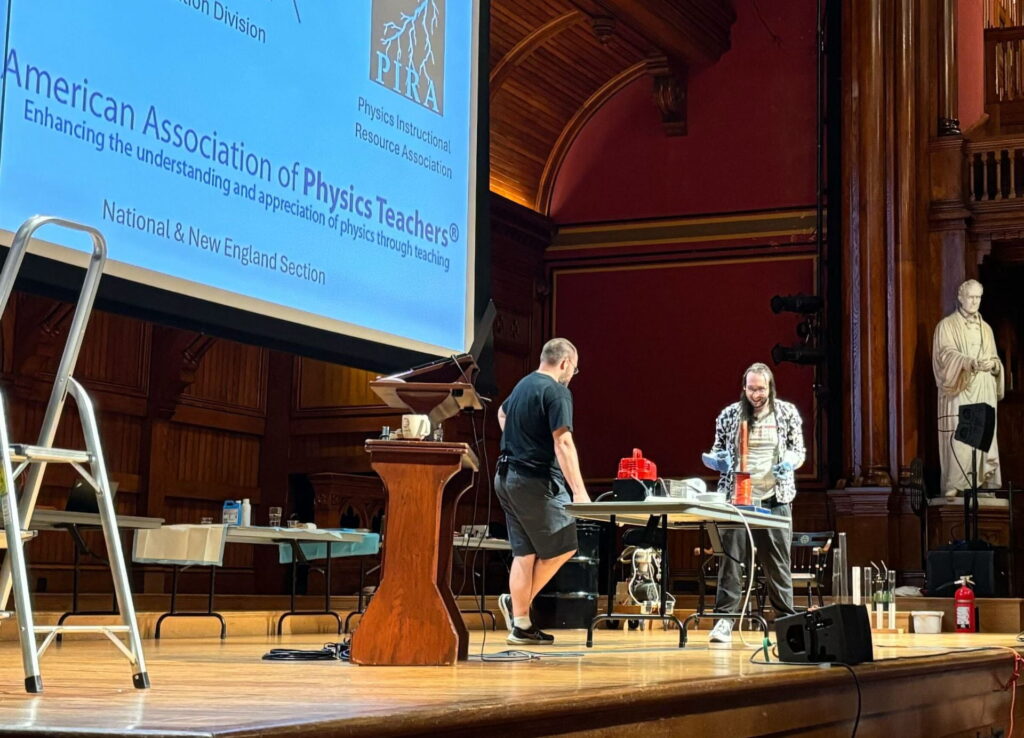
PEG’s Physics Instructional Resources Lab (PIRL) was especially busy contributing to events in the early days of the Meeting. In a shift to the traditional program of the Summer Meeting for this year, the Physics Instructional Resource Association (PIRA, the professional organization of lecture demonstration specialists), handed off their annual workshop to the teams at MIT and Harvard. Instead of a standard presentation of 100-200 essential demos, the PIRL team presented a Saturday morning workshop to an audience of several dozen lecture demonstration specialists from around the world on how our team integrates into the teaching of studio-format introductory physics (TEAL), followed by a crowd-pleasing showcase of historical physics demonstration apparatus. This was then followed by a Sunday morning workshop from their counterparts at Harvard Natural Sciences Lecture Demonstrations. In the leadup to the Summer Meeting, Harvard was also host to the Harvard-Royal Institution Demonstration Summit where PEG Senior Technical Instructor Caleb Bonyun served on a panel on social media outreach. One of the highlights of any AAPT Summer Meeting is the annual Physics Demonstration Show, which is open to the public. This year, Technical Instructor Christopher Miller and Senior Technical Instructor Joshua Wolfe (also PIRL Group Manager) contributed performances to the show in front of an enthusiastic crowd of 350 people at Harvard’s Sanders Theater. Their electromagnetic demonstrations of a jumping ring and radio transmission between coils were joined by demonstrations from special guests including Dan Plane of the Royal Institution, 2024 Halliday and Robert Resnick Award winner Tatiana Erukhimova of Texas A&M, and local physicist-turned-plasma artist Wayne Strattman. Among a night of spectacular moments, Chris’s talent for perfect comic delivery was the one that kept Meeting attendees talking and laughing for days afterward.

In addition to these demonstration-themed activities, PEG members contributed to several other special events at the Summer Meeting. PEG’s residential education group hosted a well-attended Sunday afternoon workshop on the Technology-Enabled Active Learning (TEAL) blended learning framework for introductory physics teaching, lead by Senior Lecturer Peter Dourmashkin and Postdoctoral Instructor Shams El-Adawy in the MIT 32-082 TEAL classroom. We joined with the AAPT New England Section to host an early-morning Coffee Hour for New England area Meeting attendees and workshop attendees at the MIT campus on Saturday morning. We hosted the training team from the Interactive Science Learning Environment (ISLE) for a full-day workshop on Sunday, taking place in the MIT Physics Department’s Pappalardo Community Room and making use of lab equipment borrowed from both PIRL and from the MIT Physics Junior Lab. The Junior Lab also provided equipment for a nuclear physics experiment presented by last semester’s Visiting Professor Randy Peterson (University of the South) as part of the Meeting’s annual Intermediate and Advanced Laboratories Workshop on Saturday morning, where PEG Technical Instructor Aaron Pilarcik also presented on the teaching uses of desktop-scale cosmic ray detectors. Sean Robinson organized and moderated a special session of the Meeting in memory of the late AAPT President and MIT Visiting Professor Charlie Holbrow, who had spent his retirement working on physics courses in MITx. Joshua Wolfe also provided a well-received presentation during the Saturday afternoon “MIT Teacher’s Day”, a simultaneous event for attendees of both the AAPT Meeting and the MIT Science and Engineering Program for Teachers (SEPT), with over 100 attendees.
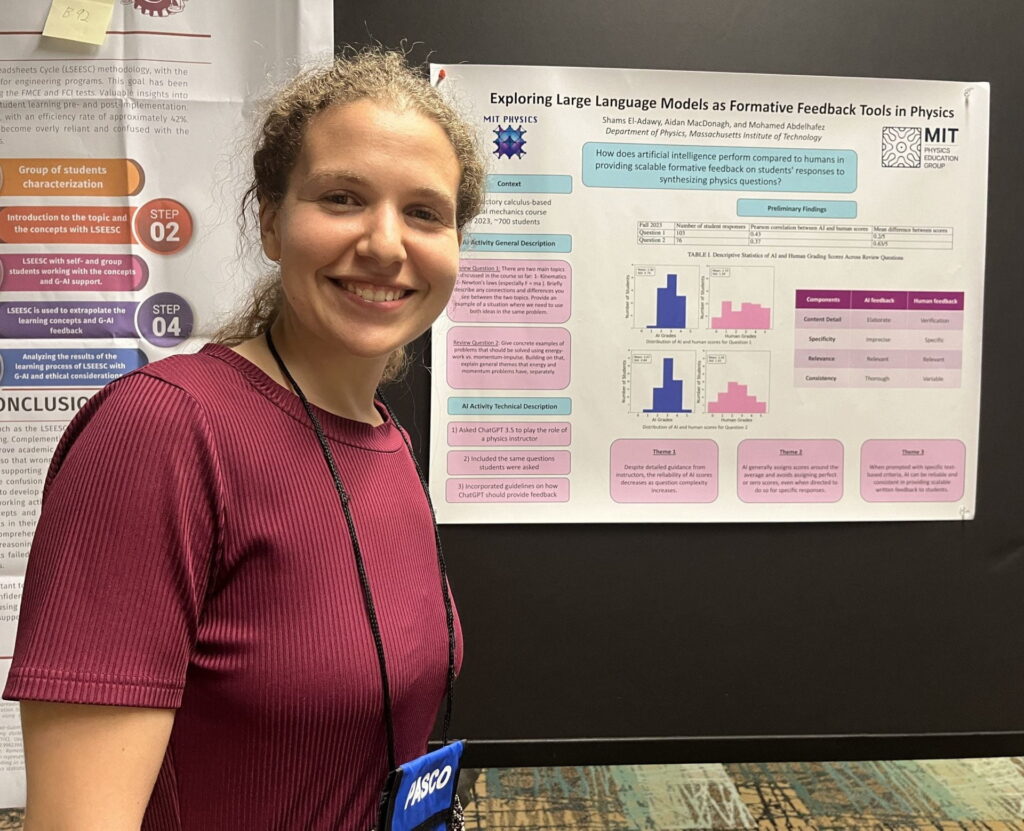
Above all, the AAPT Summer Meeting is an academic conference. So, along with the above workshops and special events, many physics educators from around MIT contributed posters and talks to the academic sessions at the Meeting. At PER parallel sessions, PEG Senior Technical Instructor Aidan MacDonagh presented research on exam rubrics and consistency checking, while PEG Lecturer Mohamed Abdelhafez presented a study on the student impacts of pre-class “Second Chance” reflections. PEG Lecturer Byron Drury presented on the impacts of peer mentoring programs, while our MIT Physics faculty colleague Ed Bertschinger presented a poster on the MIT Physics Mentor Program. In a session on developments in upper-level physics, PEG Lecturer and Group Manager Michelle Tomasik presented on the implementation of active learning in 8.03. Meanwhile, our neighbors in MIT Physics faculty colleague David Pritchard’s RELATE group presented on mapping answer patterns to misconceptions. In parallel sessions and poster sessions on advanced laboratory teaching, Aaron Pilarcik presented on Junior Lab’s optical trapping experiment while Sean Robinson presented on Junior Lab’s partnership with the MIT Radio Society on a new 21cm radio astronomy facility (co-authored with Aaron Pilarcik, PEG Technical Instructor Oris Salviano Neto, and MIT EECS graduate student Daniel Sheen). In a session on apparatus, Christopher Miller presented a historical narrative of the MIT Physics Department’s teaching efforts through its layers of demonstration apparatus. More information on these talks and posters is available on our Publications page.
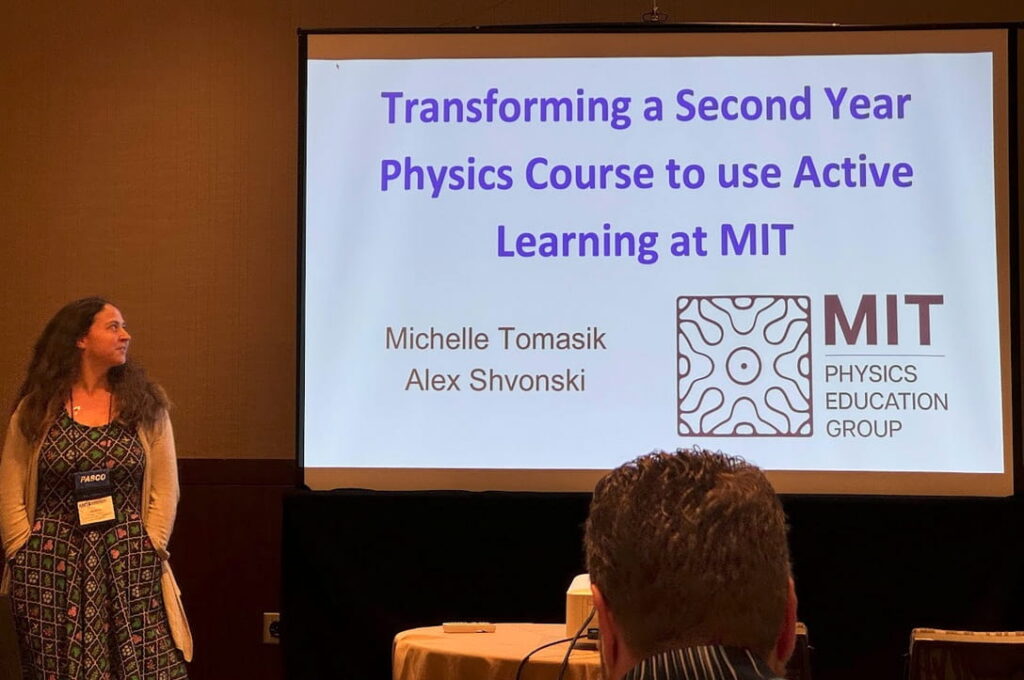
A number of MIT student attendees also contributed to the academic sessions at the Meeting. Rising senior and APS Education Programs Intern Reidyn Wingate presented a poster on personas. Our colleagues from the MIT Edgerton Center were also present: Instructor Elizabeth Cavicchi presented a model of contextualized education designed by recent MIT Physics graduates Hillary Andales and Riley Moeykens. The Edgerton Center also sponsored current MIT undergraduate Pari Rajesh’s talk on hands-on astronomy and Instructor Edward Moriarty’s talk on international collaborations involving MIT students as project mentors.
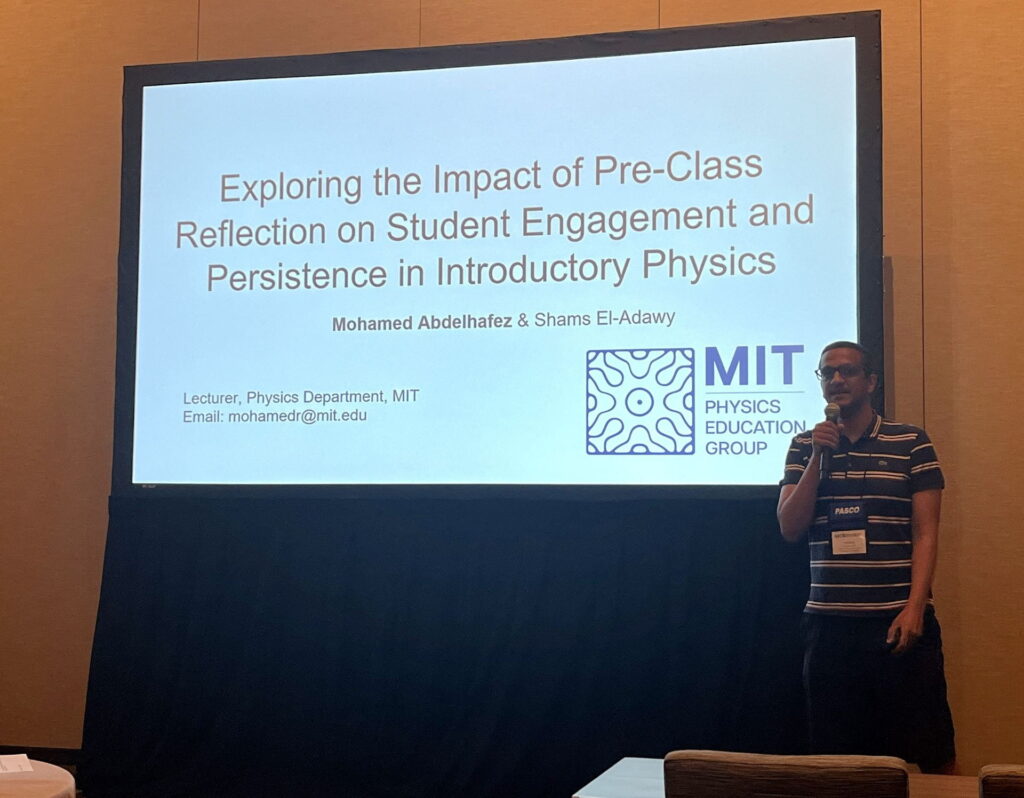
After the Summer Meeting closed, a number of MIT attendees remained for the Physics Education Research Conference (PERC), where Shams El-Adawy, Mohamed Abdelhafez, and Aidan MacDonagh presented a poster on the use of Large Language Models for formative assessment, followed by discussions on AI in the classroom with our colleagues from Harvard. The following week, PEG co-hosted a four-day workshop run by the PEER Field School (Professional Development for Emerging Education Researchers) with our colleagues from Harvard Physics and Harvard Medical School, forming a new a local cohort of education researchers (including one MIT Physics graduate student!).

It was a busy and exciting two weeks for physics educators from all around MIT, especially in the Physics Education Group. We all look forward to next year!
